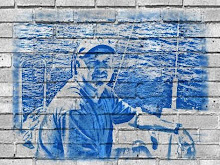
Woodblock printing in Japan, (moku hanga) is a technique that was used very widely for printing books. It was also used in China for centuries to print books, long before the advent of movable type. The technique is essentially the same as that which is called woodcut in Western printmaking.
By the eleventh century, Buddhist temples in Japan were producing their own printed books of sutras, mandalas, and other Buddhist texts and images. For centuries, printing was restricted only to the Buddhist sphere, as it was too expensive for mass production, and did not have a receptive, literate public to which such things might be marketed.
It was not until 1590 that the first secular work would be printed in Japan. This was the Setsuyōo-shūu, a two-volume Chinese-Japanese dictionary.
The medium quickly gained popularity among artists, and was used to produce small, cheap, art prints as well as books.
The technology, though more tedious and expensive than later methods, was far less so than the traditional method of writing out each copy of a book by hand; thus, Japan began to see something of literary mass production.
Technique
The text or image would first be drawn onto Washi (Japanese paper), and then glued onto a plank of wood, usually cherry. Wood would then be cut away, based on the outlines given by the drawing. A small wooden hard object called a baren would be used to press or burnish the paper against the inked woodblock, thus applying the ink onto the paper.
Excerpts from Wikipedia















